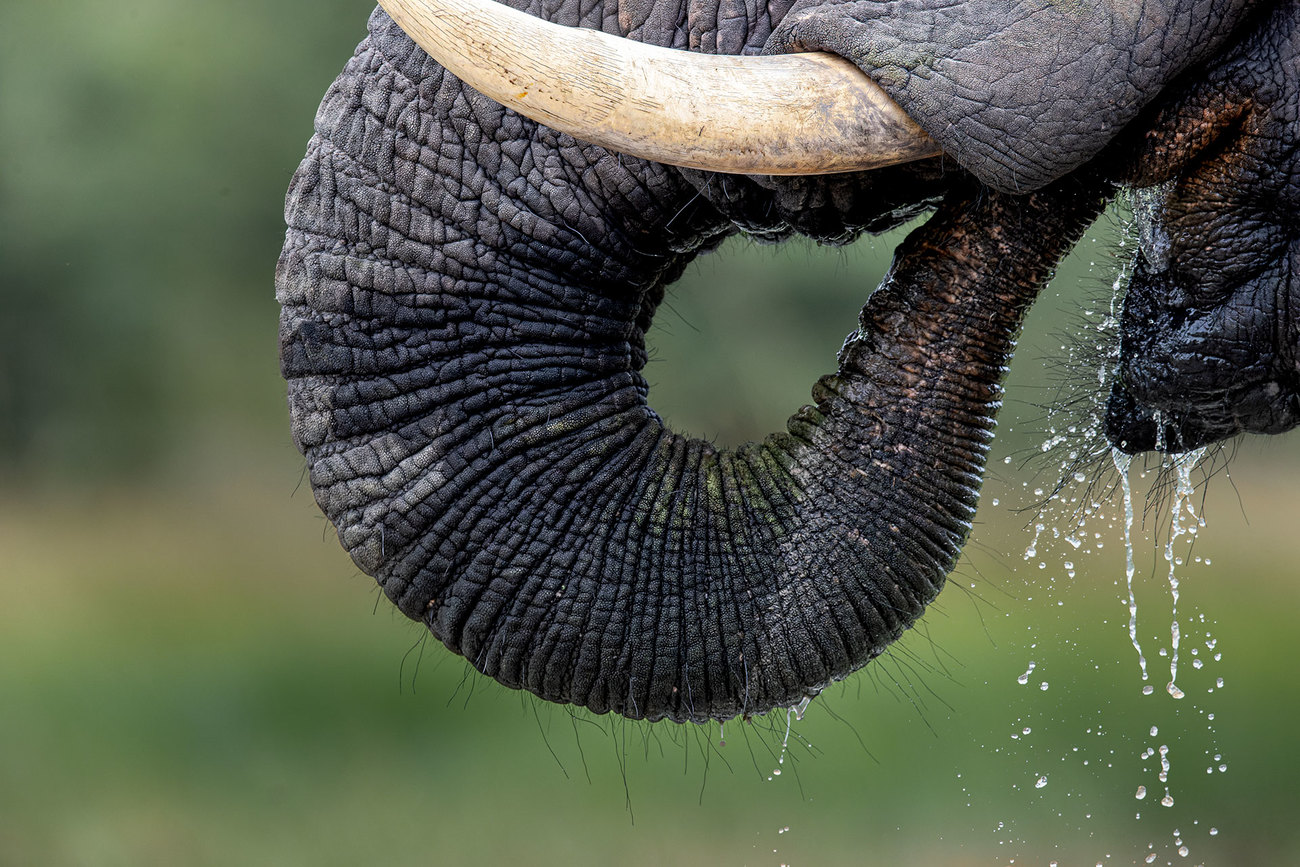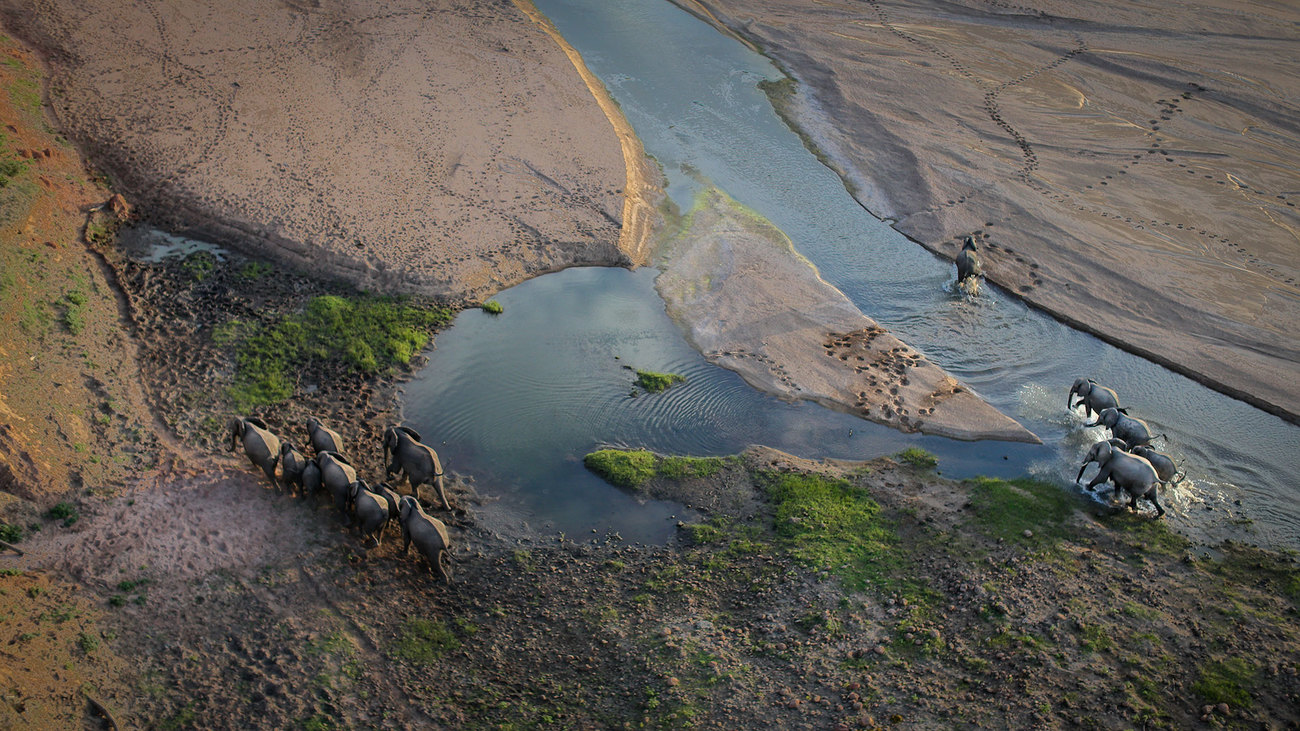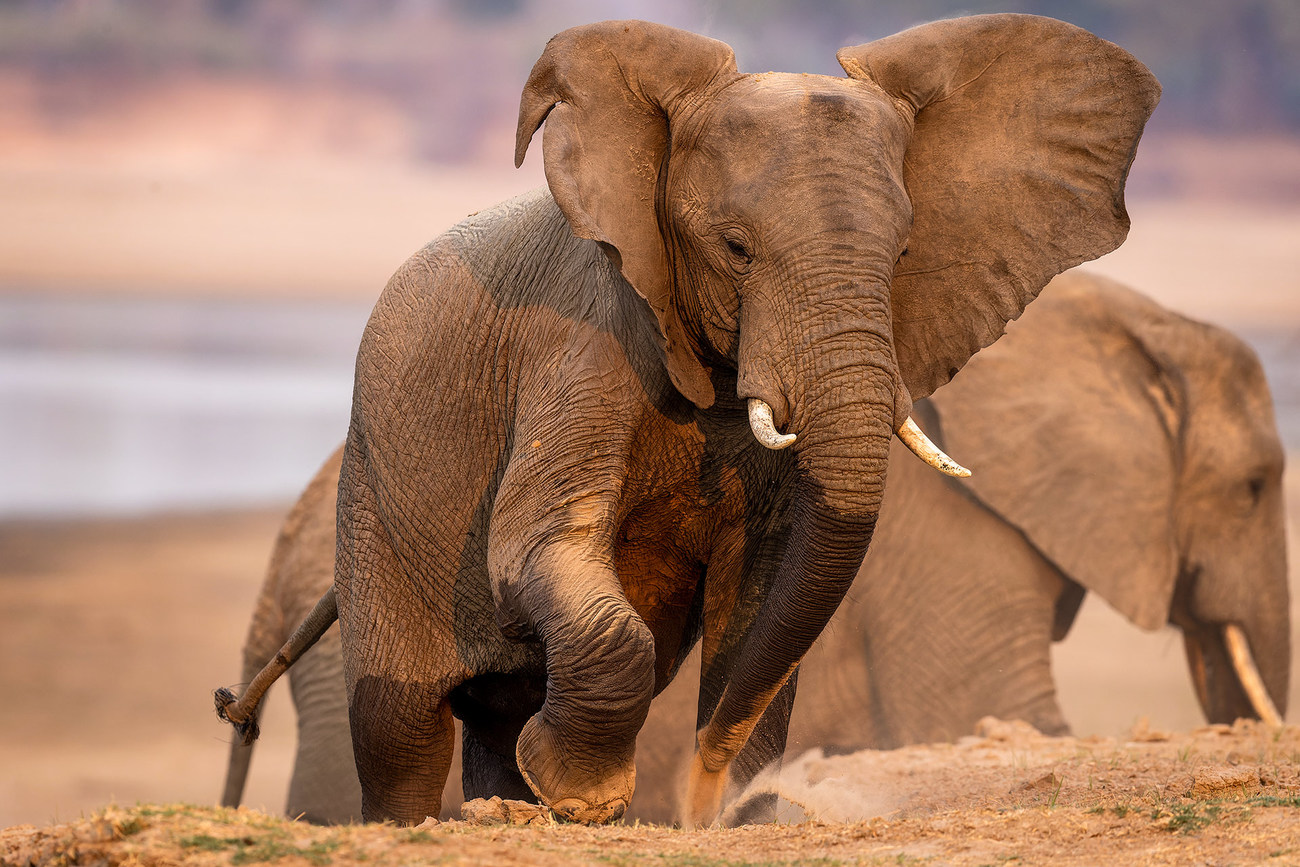Press releases
Zimbabwe—tracking elephants with technology
Read morea roadmap to reversing the decline of southern Africa’s elephants

Written by Peter Borchert, writer and conservationist
A common view of elephants is that they are large herbivores with enormous appetites, altering landscapes to the detriment of other species, including humans. However, the authors of a new paper argue that the real harms arise from the humans that have denied elephants the space they need to thrive. The savannas of Africa are no longer theirs to roam because people dominate 80 percent of the landscapes elephants lived in before colonial development.
“At the continental scale, Africa’s elephants are in trouble,” says study author Professor Rudi van Aarde, who chairs the Conservation Ecology Research Unit (CERU) at the University of Pretoria. “Numbers are declining, mostly due to ivory poaching and habitat loss.”
Concerns about elephant numbers are so serious that savanna elephants have been categorized as Endangered and forest elephants as Critically Endangered in the IUCN (International Union for Conservation of Nature) Red Data List. Yet, at the same time, some conservationists contend that in southern Africa, particularly Botswana and Zimbabwe, elephant numbers are too high.
That’s because there are pockets of stable or even increasing elephant populations, says van Aarde. The growth in these localized populations traces to protection in conservation areas where most of Africa’s elephants live, he adds.
The complex combination of continental declines with patches of regional rebound arises in part from events in the early 20th century, when sophisticated standards for counting elephants were lacking. At that time, the population was estimated to be about 10 million, and a few centuries earlier, in the 1500s, the number could have been even higher with less human competition.

Just before the turn of the 21st century, however, these magnificent beasts numbered only a million or so, representing a decline that has since continued. Today, the reasonable consensus is that the continental population is no higher than 415,000 for Africa’s two species: Loxodonta africana (the savanna elephant) and Loxodonta cyclotis (the forest elephant).
Demand for ivory is likely the main factor in this decline. Poaching continues the decimation without respite, and from 2010 to 2012 alone, poachers killed 100,000 African elephants. Furthermore, in 2013, TRAFFIC warned of “an uncertain future for elephants” as long as they remain under continuing severe threat from the growing illegal ivory trade.
Other factors exacerbate the situation. Pressure on natural resources to meet the needs of a burgeoning human population has taken its toll, and soon, the number of people living in Africa will pass the 1.5 billion mark. The continent also is predicted to remain the world’s fastest-growing region until around 2050, when its population will finally peak before levelling off and then possibly declining.
Continent-wide land-use changes have generated increasing fragmentation of suitable elephant habitat. These changes are related to wholesale logging of forests (much of it illegal), extraction industries, agriculture and ranching, and the sprawl of towns, villages, and cities.
All of these human activities have encroached on the landscapes where elephants historically lived, so that savanna elephants now occur in only 24 countries and occupy only 15 percent of their historic pre-agricultural range. The fate of forest elephants has been much the same. Once found across the vast tropical forest areas of Central and West Africa, they now are confined mostly to six countries and occupy only about 25 percent of their former range. Where elephants are not confined within conservation areas, increasing conflict with their human neighbours is all too common.
The research focus of Van Aarde and co-authors’ for almost two decades has been finding solutions to these dilemmas in the context of southern Africa. Their conclusions were published October 22 in PLoS ONE in their paper, “Mapping potential connections between Southern Africa’s elephant populations.”
“Our paper focuses on the southern African states of Angola, Botswana, Malawi, Mozambique, Namibia, South Africa, Zambia, and Zimbabwe,” says van Aarde. “This vast territory spanning some 2.7 million square miles, contains approximately 80 percent of the world’s savannah elephants, most of them living in protected areas of almost 350,000 square miles.”

Even though the network of protected areas consists of large national parks and other reserves, the elephant territory they cover is highly fragmented, van Aarde says. As a result, the animals cannot follow their natural migration routes in their search for seasonally available food and water. “We have attempted to identify opportunities for improving the connections between protected areas that harbour the remaining elephant populations of the region,” he says.
The need to connect these fragments makes conversations about land and elephant counts, especially in southern Africa, less material. Many years ago, Van Aarde and colleague Tim Jackson made similar arguments. In April 2006, they wrote in Africa Geographic that “the real debate should rather be about the more complex issues of space, water, and food relative to elephant populations.” In essence, they concluded, “when addressing ‘too many,’ we are not tackling elephant numbers per se, but their impact.” Elephant numbers do matter, but how they use space and how this use affects management are more so, they wrote, and focusing on numbers without also addressing space and resources “makes no sense.”
In the PLoS ONE paper, van Aarde and colleagues explain that although the compression of elephants into protected areas benefits them, the improvements are transient. Eventually, their confinement is detrimental for the animals, not only in smaller reserves but also in large conservation areas like Kruger National Park in South Africa and Hwange National Park in Zimbabwe. Confinement and fragmentation of their once-continuous living spaces ultimately have adverse demographic and genetic consequences for elephants, which is of grave concern and flies in the face of the first principles of conservation. “We urgently need a solution,” the authors write.
Such a solution lies in reconnecting nature. The Global Deal for Nature (GDN) has recognized the importance of this connectivity among protected areas to improve population viability and persistence, especially of large-bodied herbivores. The paper authors share this view, and their overarching goal was to map where elephants can and cannot move between their current populations. To achieve this aim, they used telemetry to record the long-term movements of elephants throughout southern Africa to show how elephants use landscapes.
“We have shown that instituting connections is possible,” says van Aarde. They used satellite telemetry data from 261 elephants tracked across 1.2 million locations to identify the natural features that limit elephant movement and the human factors, including fencing, that further prevent or restrict dispersal. With the geospatial data overlaid on the occurrence of elephants, they built a map of suitable landscapes that are “environmentally appropriate for elephants and where humans allow them to be,” says van Aarde.

For this work, they had four primary considerations:
If these corridors could simply be opened for elephants to move, even if not precisely to their instincts, that would be wonderful. However, as with so many difficult tensions between humans and nature, the solution is not so simple. Van Aarde adds the caveat that socio-political will may be a more important factor in reconnecting populations than are the environmental or other anthropogenic limitations. “Would local communities willingly move their families and livelihoods to avoid elephants? Would governments cooperate in removing national border fences? These are difficult questions,” he says, “but we must pose them when seeking connectivity across a continent.”
The network of protected areas they identified “provides a foundation,” says van Aarde, “but long-term population stability will be difficult at best without the dispersal of elephants.” Achieving the long-term aim will require cooperation with local communities and governments to protecting the connections for elephant dispersal, adds van Aarde. "The opportunities we have identified may represent some of our best chances at a sustainable future for elephants.”
Our work can’t get done without you. Please give what you can to help animals thrive.
Unfortunately, the browser you use is outdated and does not allow you to display the site correctly. Please install any of the modern browsers, for example:
Google Chrome Firefox Safari